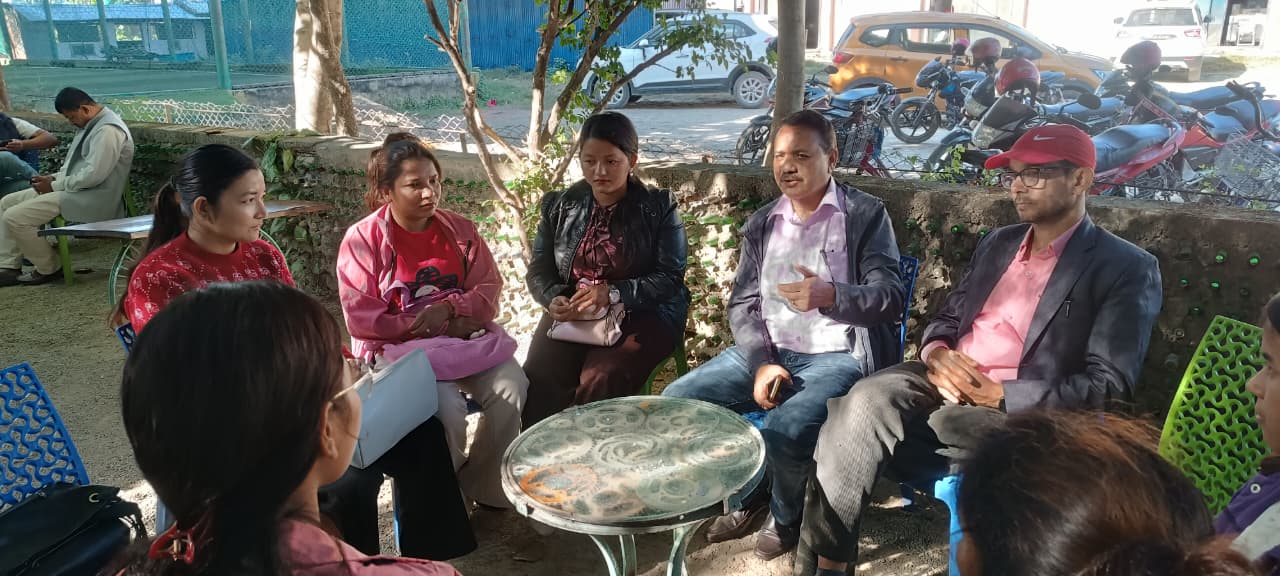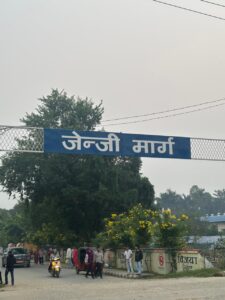NEWS
November 13, 2025

IN BRIEF
2nd Nov 2025, The ongoing discussion with the youth group […]
SHARE
2nd Nov 2025,
The ongoing discussion with the youth group shifted to include young people, journalists, and activists from Dhangadi, Sudurpaschim. The discussion was initially a reflection from the day of Sep 8 and that of the following day. Students from Kailali Multiple Campus (KMC) in Dhangadi led a peaceful demonstration on 9th Sep against the use of force by the government which killed young people, one of whom was Subas Bohara of Dhangadi. The peaceful protest was infiltrated by the unidentified groups which later escalated the protests into violent manners leading to torching and vandalizing of public property. Participants talked about what they thought and were worried about. They pointed out systemic and societal problems and its influence on what young people in the region hope for and what they are afraid of.

- Fear, Factionalism, and Fragile Security, post-Gen Z movement
The factionalism among the Gen-Z representatives adds to the uncertainty of the political future. Even at this bought time, the key issues such as election method and constitutional validity are not agreed by the Gen Z groups and those in government. Thus, the doubt remains among the participants that the elections will not take place in the stated time.
This political uncertainty is compounded by the weakened law enforcement. Low police morale and in adequate equipment has caused miscreants and criminal organizations to act with impunity. The recent murder case in Ghodaghodhi municipality where a person was beheaded and his head was brought to a nearby police station, helps us visualize the fear in non-politically aligned common people.
Adding to the fear is the possibility of retaliation from the ousted political parties and politicians. The glimpse of such is already been seen in Sudurpashcim. One of the youth in Kanchanpur was stripped naked, beaten and humiliated into suicide, and some others belonging to generation Z were interrogated by local politicians after the protests were over. Should the older political parties come back to power post-election, they would retaliate on a much bigger scale penalizing and imprisoning the Gen-Z protestors.
- Inclusive reform process a far fetched idea
The major concern from the participants at this moment is how the current discussion and the development at the central level lacks representation of Sudurpashcim. The youth at Dhangadhi are unaware of any channels or way to organize their efforts and voices in this process of reform. There is the lack of a central entity, a group or individual from Sudurpashcim recognized as the province’s Gen-Z voice, or even if there are any, youth have no idea about it.
- Obstacles in youth political participation
When the conversation steered into the possible barriers for youth to be involved in local and national politics, it started with the lack of opportunities and enabling the environment right from the local level. The student wings and politics is not independent and is heavily influenced by the mother parties so much so that even the selection of the representatives at the college levels are based on nepotism and favoritism. The near and dear ones get the opportunity easily. This is further difficult for young women as they are not trusted enough. As one of the participants states, “Despite the fact that the majority of the students are female, they are never considered as the representative for elections. Women are over-assigned with duties or activities at inappropriate times and in undignified spaces, to reinforce the notion that they are not able to handle the pressure of politics.”
Further, youth migration plays a huge role as the youth aspire to migrate within or beyond the nation for education, employment and better facilities.
- Information and its credibility
The youth were particularly vocal about the widespread misinformation and disinformation on social media. They noted that the lack of credible discussion around important issues, coupled with the circulation of false news, has deeply influenced the mindset of young people. This problem was not limited to the protest period but it even continued after. The media outlets rushed to publish breakthrough stories, often compromising accuracy. As a result, many young participants expressed growing skepticism toward even established media and said they have become more cautious about verifying information and checking sources before forming opinions.
